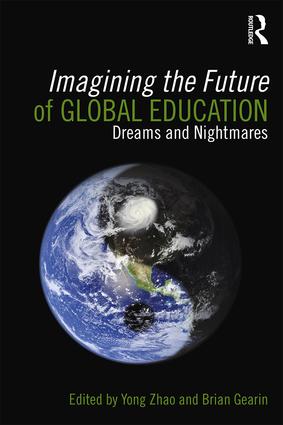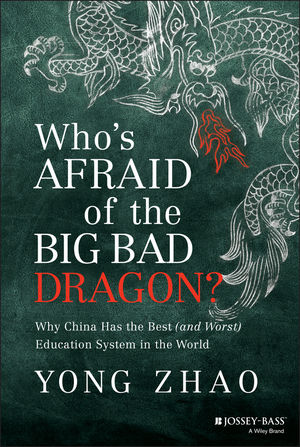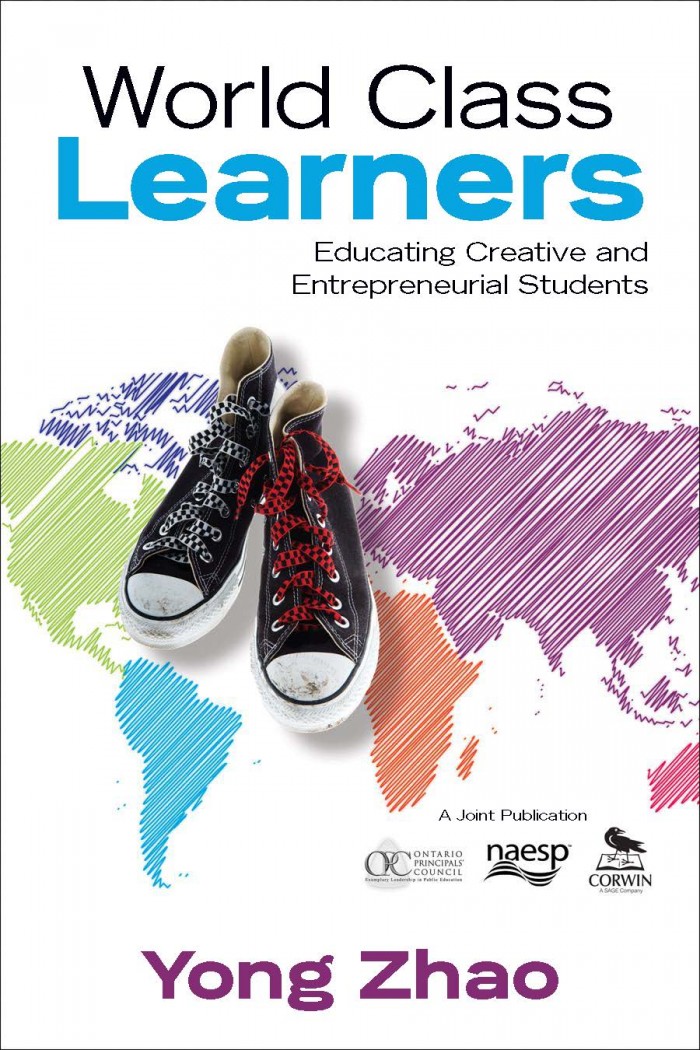Reading the PISA Tea Leaves: Who Is Responsible for Finland’s Decline and the Asian Magic
“Finland Fell from the Tip of PISA,” says the headline of a story in the largest subscription newspaper Helsingin Sanomat in Finland, according to Google Translate (I think it should be
Finland Falls from the Top of PISA). I don’t know Finnish but thanks to Google Translate, I was able to understand most of the story. The gist is that Finland has fallen from the top in the current round of PISA.
This is big news, with significant implications not only for the Finns but also for the rest of the world that has been looking at Finland as the model education system since 2001 when Finland was number one in the first round of PISA. Although results of the 2012 PISA won’t be officially unveiled until 10am GMT, December 3rd. the leaked story, published on November 30th, has already sent the Finns and others to speculate the causes of Finland’s decline. “The reasons are seen in the teachers’ continuing education in poor and outdated teaching methods and technology,” writes the Helsingin Sanomat story (courtesy of Google Translate).
While the Finns are right to be concerned about their education, it would be a huge mistake to believe that their education has gotten worse. Finland’s slip in the PISA ranking has little to do with what Finland has or has not done. It has been pushed down by others. In other words, Finland’s education quality as measured by the PISA may have not changed at all and remains strong, but the introduction of other education systems that are even better at taking tests has made Finland appear worse than it really is. In 2000 and 2003 when Finland was number one, only two East Asian education systems were included: Korea and Japan. In 2009, there were seven from Eastern Asia: Shanghai, Hong Kong, Taiwan, Singapore, South Korea, Japan, and Macao. Six out of the seven ranked top 10 in math, five in science and five in reading and Shanghai took number away from Finland. I have not seen the 2012 results yet and will miss the big moment on my way back to the U.S. from Hong Kong, but I can guess, as the Helsingin Sanomat already suggested, the East Asian education systems did very well again, squeezing further Finland down the league table.
An even bigger mistake is to assume that the Asian systems have made significant improvement and surpassed Finland. The Asian systems have always done extremely well in international tests, especially in math. The top scoring education systems in another major international assessment, the TIMSS, have always been Eastern Asian since 1995: Singapore, S. Korea, Hong Kong, Japan, and Taiwan. Mainland China has yet to participate in TIMSS.
The 2009 PISA results have already begun to shift the world’s attention away from Finland to Shanghai. I fear that the 2012 PISA will complete that shift and make Shanghai and other East Asian education systems THE model of education because the magic potion that East Asian success in international tests is very poisonous.
The recipe for the East Asian success is actually not that magical. It includes all the elements that have been identified as the symptoms of the GERM (Global Education Reform Movement) by the great Finnish education scholar Pasi Sahlberg: Competition, Standardization, Frequent Testing, and Privatization. In East Asian high PISA performing systems, these ingredients are more effectively combined and carried out to an extreme to result in entire societies devoted to ensure that their youngsters become excellent test takers.
While the East Asian systems may enjoy being at the top of international tests, they are not happy at all with the outcomes of their education. They have recognized the damages of their education for a long time and have taken actions to reform their systems. Recently, the Chinese government again issued orders to lesson student academic burden by reducing standardized tests and written homework in primary schools. The Singaporeans have been working reforming its curriculum and examination systems. The Koreans are working on implementing a “free semester” for the secondary students. Eastern Asian parents are willing and working hard to spend their life’s savings finding spots outside these “best” education systems. Thus international schools, schools that follow the less successful Western education model, have been in high demand and continue to grow in East Asia. Tens of thousands of Chinese and Korean parents send their children to study in Australia, the U.K., Canada, and the U.S. It is no exaggeration to say that that the majority of the parents in China would send their children to an American school instead of keeping them in the “best performing” Chinese system, if they had the choice.
The East Asian education systems may have a lot to offer to those who want a compliant and homogenous test takers. For those who are looking for true high quality education, Finland would still be a better place. But for an education that can truly cultivate creative, entrepreneurial and globally competent citizens needed in the 21st century, you will have to invent it. Global benchmarking can only give you the best of the past. For the best of the future, you will have do the invention yourself.
(May append later. Gotta run to the airport)




























[…] In this post, he reveals some inside information about PISA: Finland has slipped out of the top tier. He says this is not because the quality of education declined in Education in Finland slipped but because so many test-centric Asian nations (and cities) participated. […]
totally agree.
have a safe trip.
[…] waarom we beter niet nu Shangai lessons kopen en waarom we Finnish lessen niet moeten weggooien, check dit artikel. Binnenkort biedt de OESO scholen zelf testen aan waarmee ze zich kunnen vergelijken met de rest […]
I think you will find that the PISA index is based on comparisons between OECD-countries only, and therefore not influenced by the inclusion of Shanghai, Singapore or Hong Kong.
[…] waarom we beter niet nu Shangai lessons kopen en waarom we Finnish lessen niet moeten weggooien, check dit artikel. Binnenkort biedt de OESO scholen zelf testen aan waarmee ze zich kunnen vergelijken met de rest […]
[…] Segons Yong Zhao, Finlàndia no ha empitjorat, sinó que altres (els asiàtics) han millorat molt. Però Pasi Sahlberg té una altra […]
The PISA test results continue to generate debate – is it “a Sputnik” moment or are international comparisons invalid? What’s the critical element – culture, parents, teachers, better instruction?
Readers might enjoy answering one of PISA questions from an earlier test. It offers insights into the demands of higher order thinking. Do American students learn how to sequence (higher order thinking) or simply memorize sequences provide by the teacher?
See my post for the question, answers, and PISA data – “Stop Worrying About Shanghai, What PISA Test Really Tells Us About American Students” http://bit.ly/tPE1YE
In Finland and Sweden we have very similar educational systems. Sweden fell way behind because of bigger number of immigrants.
This comment is not r…ist at all. It’s a fact. Decline proofs unsuccesful “homefication” despite vast amounts of money spent (billions and billions!).
Hello Yong, thanks for your review here … I’m an innovative (25+ year) educator across the border in British Columbia and I know these OECD-PISA scores have become a big deal, and are now widely reported in Canadian media. I’ve just seen our national newspaper (Globe and Mail) calling for BC to reject the (pending) new ‘BCEd Plan’ calling for a more personalized approach, because of these PISA test scores. Of course the writer – senior editor Jeffrey Simpson – made no attempt to truly investigate the subject of this or any kind of standardized testing – because that would have just gotten in the way of his biases. Ugh.
Anyways, I’m a longtime advocate of personalized learning and much less standardized schooling, and I really enjoyed your new book, and am sharing with my colleagues in “SelfDesign Learning Community” – a government-supported BC independent school that is a leader in Personalized Learning. I know you’d be interested in seeing and knowing what we’re up to.
– Michael Maser
[…] Does this mean that the Finns have been wrong all the time? Not according to US education academic Yong Zhao ( a visitor to New Zealand earlier this […]
Ben,
The explanation can’t only be the number of immigrants, because 1) the kids of non-native background score better in FInland than in Sweden and 2) this holds even in immigrant dominated classes.
You can actually browse the data on http://nces.ed.gov/surveys/international/ide/
[…] Yong Zhao ; Diane Ravitch ; The Atlantic ; Quartz ; Joe Bower (he has a few posts on this) Share this:TwitterFacebookGoogleLike this:Like Loading… […]
[…] much attention is given to the ranking part of the tests, as Yong Zhao points out, even those at the top are wondering about their success: While the East Asian systems […]
[…] average was 501. In reading, the average score of US students was 498; the OECD average was 496. University of Oregon professor Yong Zhao weighs in (well, lots of folks did, but I’ll just link to […]
[…] average was 501. In reading, the average score of US students was 498; the OECD average was 496. University of Oregon professor Yong Zhao weighs in (well, lots of folks did, but I’ll just link to […]
Once again Yong has astutely pointed to the limitations of simplified thinking & policy about test taking. I hope the Finns will be able to avoid a media driven overreaction.
One explanation to Finland’s results can be that the test sample was not not entirely random, but the test pupils were selected from those schools where immigrant pupils are relatively abundant, to get a represantive sample of the immigrants. Sure this could also be a way to exclude the Finnish schools from wealthiest and most academically educated areas that is the schools with best pupils from the study!! This topic is discussed in the press in Finland at present.
No matter what teachers here seem to be relieved here as well, because they can demand more investment and resources for school development now, after years of saving and budget cuts dictated by the state.
[…] Reading the PISA Tea Leaves: Who Is Responsible for Finland’s Decline and the Asian Magic Education in the Age of Globalization […]
this is good point of view. According to me Indian tea leaves is good than Finland. But i am not complete my study in tea leaves so i not told anything about that but after test i am sure that Indian tea leaves is much batter than others..
[…] towards a mathematical wilderness, spare a thought for Finland who was out-ranked by Estonia. Yong Zhao‘s attempt at translating the Finnish newspapers was […]
[…] http://zhaolearning.com/2013/12/02/reading-the-pisa-tea-leaves-who-is-responsible-for-finland%E2%80%… […]
[…] Chinese media has also been highly circumspect in post-PISA analysis: like Yong Zhao, they know that a system that has traditionally trained students to do well in exams, is likely […]
[…] algún tipo de problema o crisis en su modelo educativo. En realidad, lo que ha ocurrido, nos explica Yong Zaho, es que ha sido superada en resultados por el emergente bloque de países del este asiático, […]
[…] “Finland Fell from the Tip of PISA,” says the headline of a story in the largest subscription newspaper Helsingin Sanomat in Finland, according to Google Translate (I think it should be Finland Falls from the Top of PISA). I don’t know Finnish but thanks to Google Translate, I was able to understand most of the story. The gist is that Finland has fallen from the top in the current round of PISA. This is big news, with significant implications not only for the Finns but also for the rest of the world … Read the full article […]
Feel free to comment:
The views expressed on this site are entirely my own. They do not represent my employer or any other organization/institution. All comments are subject to approval.Archive
03.17.24 Focused: Understanding, Negotiating, and Maximizing Your Influence as a School Leader
02.25.24 What Happened to Global Competence?
08.05.23 Rethinking the time spent at school: Could flexibility improve engagement and performance for students and teachers?
01.17.23 Introduction to Improbable Probabilities: The Unlikely Journey of Yong Zhao
01.05.23 How Not to Kill Creativity?
08.19.22 Preface to Improbable Probabilities: The Unlikely Journey of Yong Zhao
02.05.22 Introduction to New Book: Learning for Uncertainty: Teaching Students How to Thrive in a Rapidly Evolving World
09.25.21 Side effects in education: Taxonomy of educational outcomes
07.13.21 Introduction to My New Book: Learners without Borders
03.09.21 New article: Build back better: Avoid the learning loss trap
02.18.21 New article: The changes we need: Education post COVID-19
09.15.20 Watch Ep4 Creativity in Crisis: How well is creativity understood? A Conversation with Barb Kerr, Haiying Long, Ron Beghetto, & Yong Zhao
08.15.20 Can Creativity be Taught? Ep 3 of Creativity in Crisis on August 28th 3:00-4:00pm Pacific Time
07.13.20 Speak a Different Language: Reimagine the Grammar of Schooling
06.11.20 Assessing Creativity in the Classroom? Recording of Ep2 of Creativity in Crisis
Tag Cloud
Accountability achievement gap CCSSO China/Chinese Commissioner Common Core Standards education Educational Policy Education Reforms national standards New York NGA Singapore standardized testing Standards student performance
WP Cumulus Flash tag cloud by Roy Tanck and Luke Morton requires Flash Player 9 or better.
Silverliningforlearning
Most Commented
Most Viewed
Views expressed on this site are entirely personal. They do not necessarily represent the official positions or views of my employer
Powered by WordPress | Log in | Entries (RSS) | Comments (RSS) | Arthemia theme by Michael Hutagalung